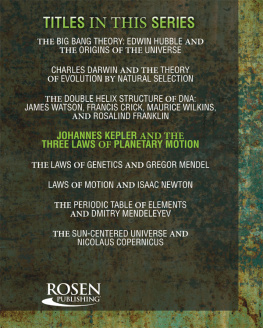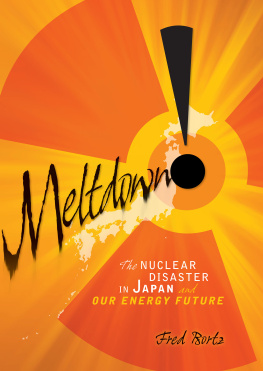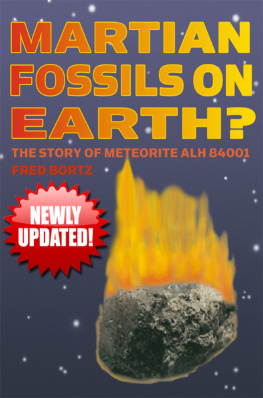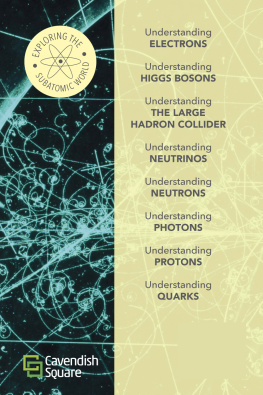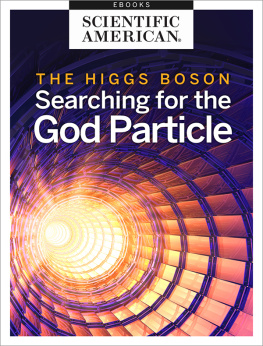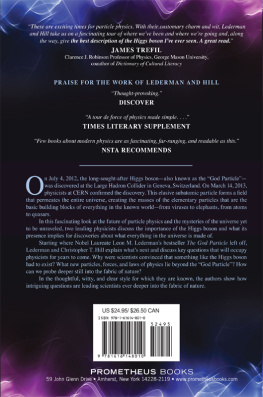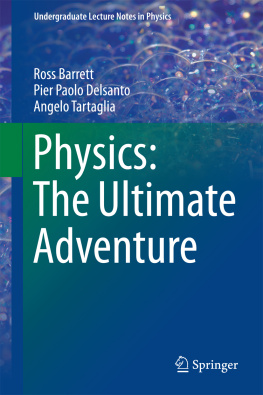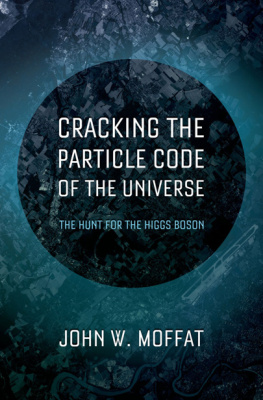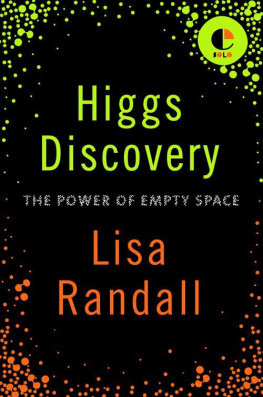Fred Bortz - Understanding Higgs Bosons
Here you can read online Fred Bortz - Understanding Higgs Bosons full text of the book (entire story) in english for free. Download pdf and epub, get meaning, cover and reviews about this ebook. year: 2015, publisher: Cavendish Square Publishing, LLC, genre: Romance novel. Description of the work, (preface) as well as reviews are available. Best literature library LitArk.com created for fans of good reading and offers a wide selection of genres:
Romance novel
Science fiction
Adventure
Detective
Science
History
Home and family
Prose
Art
Politics
Computer
Non-fiction
Religion
Business
Children
Humor
Choose a favorite category and find really read worthwhile books. Enjoy immersion in the world of imagination, feel the emotions of the characters or learn something new for yourself, make an fascinating discovery.
- Book:Understanding Higgs Bosons
- Author:
- Publisher:Cavendish Square Publishing, LLC
- Genre:
- Year:2015
- Rating:5 / 5
- Favourites:Add to favourites
- Your mark:
- 100
- 1
- 2
- 3
- 4
- 5
Understanding Higgs Bosons: summary, description and annotation
We offer to read an annotation, description, summary or preface (depends on what the author of the book "Understanding Higgs Bosons" wrote himself). If you haven't found the necessary information about the book — write in the comments, we will try to find it.
Readers will explore the history and the theoretical properties of Higgs Bosons, the exciting subatomic particles that have eluded scientists for years.
Understanding Higgs Bosons — read online for free the complete book (whole text) full work
Below is the text of the book, divided by pages. System saving the place of the last page read, allows you to conveniently read the book "Understanding Higgs Bosons" online for free, without having to search again every time where you left off. Put a bookmark, and you can go to the page where you finished reading at any time.
Font size:
Interval:
Bookmark:


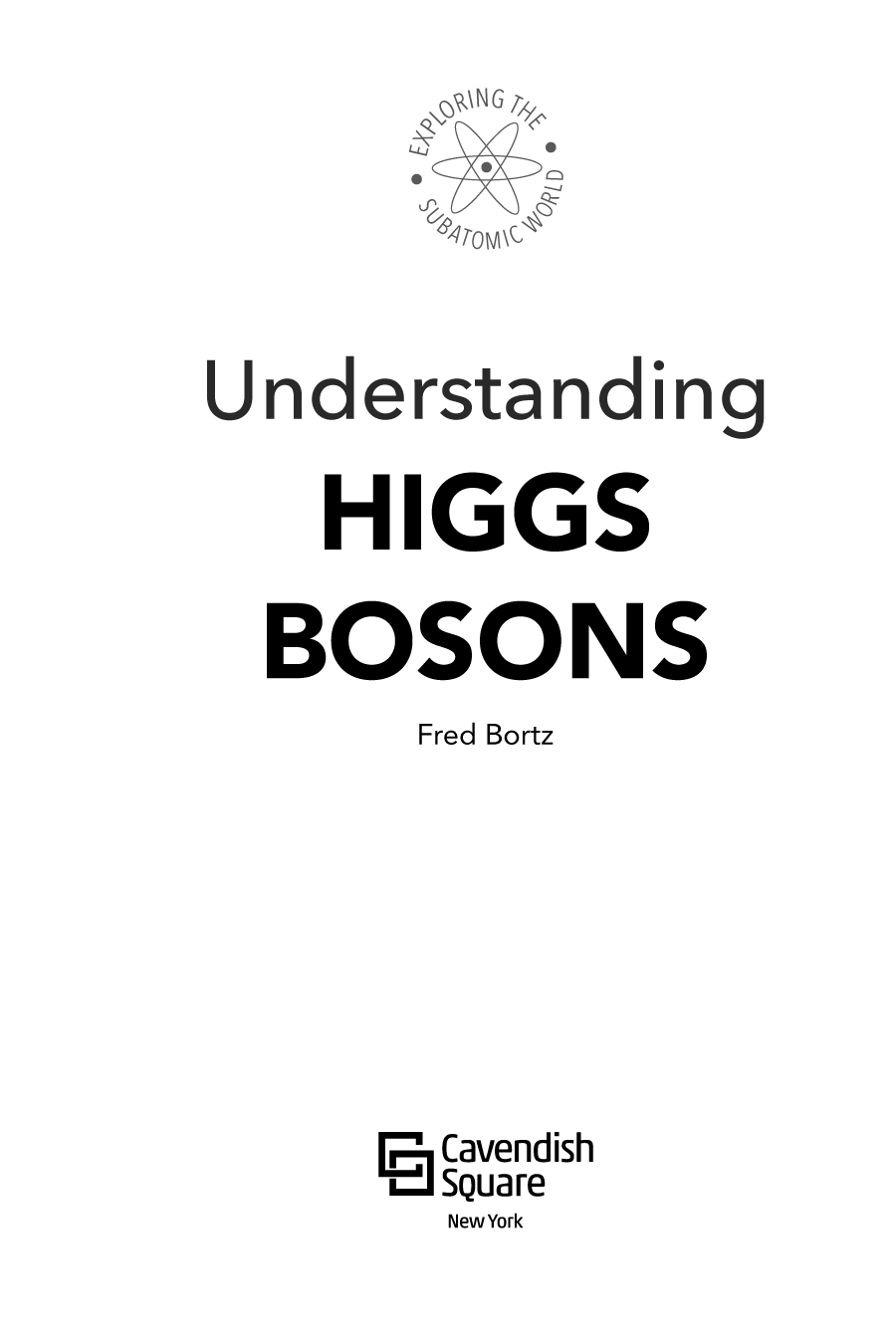
To Rosie, whose field helps people gain a mass of knowledge
Published in 2016 by Cavendish Square Publishing, LLC
243 5th Avenue, Suite 136, New York, NY 10016
Copyright 2016 by Cavendish Square Publishing, LLC
First Edition
No part of this publication may be reproduced, stored in a retrieval system, or transmitted in any form or by any meanselectronic, mechanical, photocopying, recording, or otherwisewithout the prior permission of the copyright owner. Request for permission should be addressed to Permissions, Cavendish Square Publishing, 243 5th Avenue, Suite 136, New York, NY 10016. Tel (877) 980-4450; fax (877) 980-4454.
Website: cavendishsq.com
This publication represents the opinions and views of the author based on his or her personal experience, knowledge, and research. The information in this book serves as a general guide only. The author and publisher have used their best efforts in preparing this book and disclaim liability rising directly or indirectly from the use and application of this book.
CPSIA Compliance Information: Batch #WS15CSQ
All websites were available and accurate when this book was sent to press.
Cataloging-in-Publication Data
Bortz, Fred.
Understanding Higgs bosons / by Fred Bortz.
p. cm. (Exploring the subatomic world)
Includes index.
ISBN 978-1-50260-550-4 (hardcover) ISBN 978-1-50260-551-1 (ebook)
1. Higgs bosons. 2. Particles (Nuclear physics) Juvenile literature.
I. Bortz, Fred, 1944-. II. Title.
QC793.5.B62 B67 2016
539.721d23
Editorial Director: David McNamara
Editor: Andrew Coddington
Copy Editor: Cynthia Roby
Art Director: Jeff Talbot
Designer: Stephanie Flecha
Senior Production Manager: Jennifer Ryder-Talbot
Production Editor: Renni Johnson
Photo Research: J8 Media
The photographs in this book are used by permission and through the courtesy of: Crady von Pawlak/Getty Images, cover; Sakkmesterke/Shutterstock.com, throughout; Fabrice Coffrini/ AFP/GettyImages, 5; Public domain/File:Democritus in Thomas Stanley History of Philosophy. jpg/Wikimedia Commons, 9; Public domain/Thomas Phillips/File:John Dalton by Thomas Phillips, 1835.jpg/Wikimedia Commons, 10; Public domain/File:DIMendeleevCab.jpg/Wikimedia Commons, 11; Source: File:Rutherford gold foil experiment results.svg/Wikimedia Commons, 13; Cambridge University Library, courtesy AIP Emilio Segre Visual Archives, Rutherford Collection, 16; SSPL/Getty Images, 20; Thomas Forget, 21; Imagno/Getty Images, 24; SSPL/Getty Images, 25; Hulton Archive/Getty Images, 27; Thomas Forget, 28; AIP Emilio Segre Visual Archives, Yukawa Collection, 31; Public domain/Nobel Foundation/File:Dirac 4.jpg/Wikimedia Commons, 33; AIP Emilio Segre Visual Archives, 36; Science Museum of London/Science and Society Picture Library/File:60-inch cyclotron, c 1930s. This shows the (9660569583).jpg/Wikimedia Commons, 38; Courtesy Brookhaven National Laboratory, 41, Photo, Inc./Science Source/Getty Images, 43; Courtesy Brookhaven National Laboratory, 44; Source: Andres Rojas/File:The Standard Model. svg/Wikimedia Commons, 48; ATLAS and CMS CERN, 49; 2005 CERN, 50; Public domain/ Energy.gov/File:HD.3F.001 (11086394836).jpg/Wikimedia Commons, 51; CERN, 53.
Printed in the United States of America
Contents
Inside the Atom
Discovering the Particle Zoo
Quarks, Leptons, and Bosons
The Higgs Boson and Beyond
W hat is matter? That is one of humanitys most ancient questions about nature. Yet it continues to be at the heart of some of the most exciting modern research. To study the tiniest particles of matter, scientists have designed and built some of the largest, most powerful, and most complex machines in the world. Their discoveries have changed our fundamental understanding of matter, and each discovery has led to even more questions. That is certainly true of the story of a long-sought subatomic particle called the Higgs boson.
When physicistsscientists who study the physical world of matter and energyofficially announced the Higgs boson discovery by the Large Hadron Collider (LHC) at the European Organization for Nuclear Research (CERN) in Switzerland on July 4, 2012, it made headlines around the world. Yet some still questioned whether the discovery met all the criteria for the elusive particle.
Further research persuaded most doubters that the particle was indeed the Higgs. In 2013, the Nobel Prize committee honored Peter Higgs (1929) and Franois Englert (1932) with that years award in physics for the theoretical discovery of a mechanism that contributes to our understanding of the origin of mass of subatomic particles, and which recently was confirmed through the discovery of the predicted fundamental particle, by the ATLAS and CMS experiments at CERNs Large Hadron Collider.
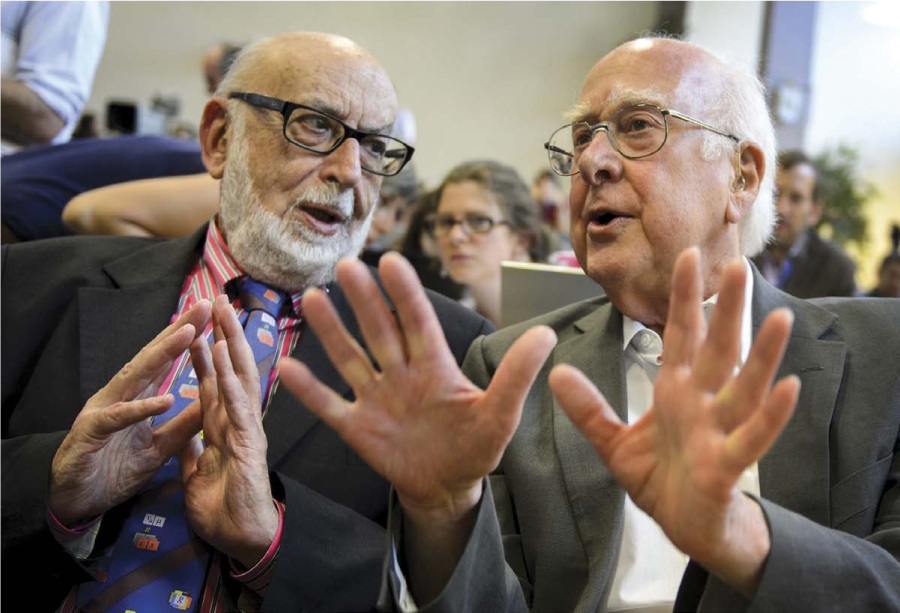
Men of the Hour. Peter Higgs (right) and Franois Englert respond to a cheering audience at CERN on July 4, 2012, where two teams of scientists announced the discovery of the Higgs boson after a nearly fifty-year quest.
What are CERN, ATLAS, and CMS?
The announcement of the 2013 Nobel Prize in Physics included three acronyms: CERN, ATLAS, and CMS. CERN stands for the original French name of the institution where researchers discovered the Higgs boson, Conseil Europen pour la Recherche Nuclaire (European Council for Nuclear Research). That acronym is still used even though Conseil in the name has been replaced by Organisation.
ATLAS and CMS are two of the detectors that scientists use at the LHC. ATLAS stands for A Toroidal LHC Apparatus, referring to its doughnut (torus) shape and reflecting the fact that physicists love to invent acronyms. CMS stands for Compact Muon Solenoid. A solenoid is a coil of wire that acts as an electromagnet. A muon, as you will read later, is a type of subatomic particle that may reveal where a Higgs boson was produced.
Rarely is a Nobel Prize awarded so soon after a discovery, but this one was fifty years in the making. Higgs and two groups of physicists, including Englert and four others, had proposed their theories in 1964. Many scientists were wondering whether they would live long enough to see their ideas validated or ruled out by experimental evidence. Indeed, Englerts collaborator Robert Brout (born 1928) died in 2011 while the LHC was still gathering the key data that led to the award. Many physicists think he would have shared the Nobel Prize, which is only given to living scientists and never divided more than three ways. Others, including Higgs, argue that Tom Kibble (1932), lead author of a paper on the subject with Gerald Guralnik (19362014) and Carl Richard Hagen (1937), deserved a share of the prize.
The discovery of the Higgs boson was historic because it completed the set of particles that physicists expected in what they call the Standard Model of particle physics. But that discovery is not the end of the story of the quest to understand the subatomic world. As is often the case in science, many unanswered questions remain. They are like dangling threads of a carefully woven fabric, and no one can be sure what might unravel when other scientists give those loose ends a tug. Just as science is built around questions such as this, so is this book. Read on to learn about the Higgs boson, why it is important, and what remains to be discovered.
Font size:
Interval:
Bookmark:
Similar books «Understanding Higgs Bosons»
Look at similar books to Understanding Higgs Bosons. We have selected literature similar in name and meaning in the hope of providing readers with more options to find new, interesting, not yet read works.
Discussion, reviews of the book Understanding Higgs Bosons and just readers' own opinions. Leave your comments, write what you think about the work, its meaning or the main characters. Specify what exactly you liked and what you didn't like, and why you think so.


